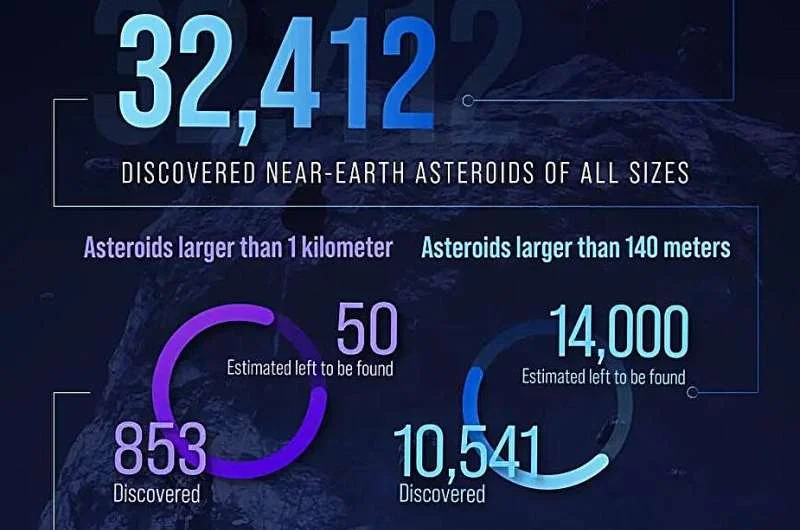Everyone loves a great infographic, right? Is this statement true even though the infographic points out a gap in our knowledge that could kill millions of people? Because that’s exactly what NASA’s infographic published on October 16 does.
One of NASA’s most practical missions is commonly known as “Planetary Defense”; This mission is essentially to keep an eye out for asteroids that could potentially collide with Earth and cause widespread destruction. Most people have heard of what happened to dinosaurs. NASA’s planetary defense side wants to make sure this doesn’t happen to us.
This is easier said than done. Asteroids do not emit their own light, so usually the only way to detect them is for sunlight to reflect off their surfaces and enter one of the various telescopes observing the night sky. Recently, their number has been increasing, created specifically for hunting asteroids.
These new telescopes work; The infographic shows that 32,000 near-Earth asteroids are known as of the end of August 2023. The effort to find and track them has been even more impressive, with more than 405 million observations submitted by amateur and professional astronomers to the Minor Planet Center, one of the central hubs of NASA’s planetary defense strategy and a central clearinghouse for asteroid hunters. all around the world.
Now let’s get to the scary parts: Of these 32,000 near-Earth asteroids, more than 10,000 are larger than 140 meters in diameter. According to the most popular estimates, if one of these were to hit Earth, it could destroy an entire city.
By comparison, the asteroid that crashed into Russia’s Chelyabinsk region in 2013, breaking windows and injuring about 1,500 people, was estimated to be no more than 20 meters across.
An asteroid seven times larger would be much more destructive and would likely hit Earth. In contrast, the Chelyabinsk meteor was disintegrated by an airburst before reaching there. When placed in the right place, such an asteroid could easily destroy a city and potentially kill millions of people, depending on where it lands.
We do not know of any of the 10,000 140 meter wide asteroids currently on a collision course with Earth. But another number in the infographic is probably the scariest: NASA’s planetary defense experts haven’t found even half of the near-Earth asteroids this size.
They estimate that there are more than 14,000 asteroids with a diameter of 140 meters that we have not yet found. And one of them may well be on a collision course. Even more impressive, they estimate that there are nearly 50 asteroids with a diameter of 1 km in space that we have not yet detected.
An asteroid this size would be catastrophic for civilization on a scale much larger than a single city, but still not as impactful as it would have been on dinosaurs, estimated to be around 10 kilometers in diameter.
The planetary defense community, which includes many other organizations beyond NASA, still has a lot of work to do to keep humanity safe if these predictions are accurate. But every little bit helps; Even an infographic that simply conveys information can potentially inspire someone to join the hunt. We need all the help we can get.













